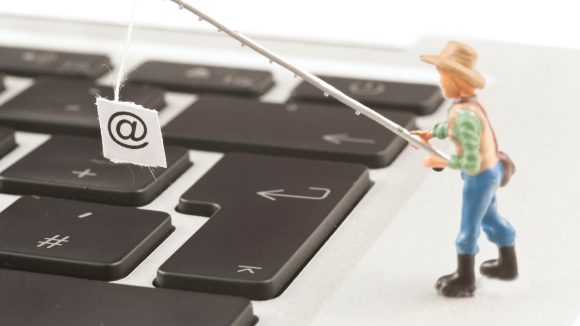
Almost everyone with an e-mail account has received fraudulent e-mails. But is it possible that such e-mails can purport to be in the name of UBS and include the UBS logo and fonts?
Yes. Unfortunately the possibility of receiving fake e-mails purporting to come from UBS cannot be ruled out. No one is fully protected against data theft, or "phishing" as it is known in specialist jargon. The term originates from the word "fishing," with the "ph" standing for "password harvesting." Criminals may, for example, copy a company's logo and then attempt to obtain sensitive client data such as credit card numbers, account details and passwords by e-mail.
The correct reaction to phishing
How can you recognize a fake e-mail? Easy: UBS, Visa and Mastercard® will never ask you to provide confidential information by e-mail. If you receive a suspicious e-mail, it is important to act correctly by taking the following steps:
- Ignore all e-mail requests for personal information.
- Do not click on any links to avoid the risk of infecting your computer with a virus.
- Forward the suspicious e-mail to esecurity@ubs.com straight away.
- Completely delete the e-mail.
Prevent phishing
To prevent scams, UBS uses the 3-D Secure security standard for online shopping and implements new security measures all the time. However, there are things that you too can do to protect yourself against data theft, starting with how you handle your personal data and the devices you use to go online. Do not reveal any personal data in an insecure format on the Internet and keep your antivirus software and firewall up-to-date at all times. Finally, it is important that you always type in the correct web address when carrying out transactions via E-Banking. Alternatively, you can use the UBS Mobile Banking app.
Seven tips for combating phishing
- Ignore e-mails asking you to reveal personal information, even if they purport to come from friends. Do not reveal personal information in an insecure format on the Internet.
- Do not click on links in suspicious e-mails as this could result in spyware or keyloggers being automatically installed on your computer.
- Always type the correct URL for the website into your browser's address bar when doing your online banking, for example.
- Always log out when you leave websites on which personal information is stored.
- Protect your Internet-enabled devices with an antivirus program and a firewall and update them regularly.
- Spam filters and even anti-phishing software are available to automatically hide potential phishers on websites and in e-mails.
- Lock your smartphone and other devices when you are not using them.
